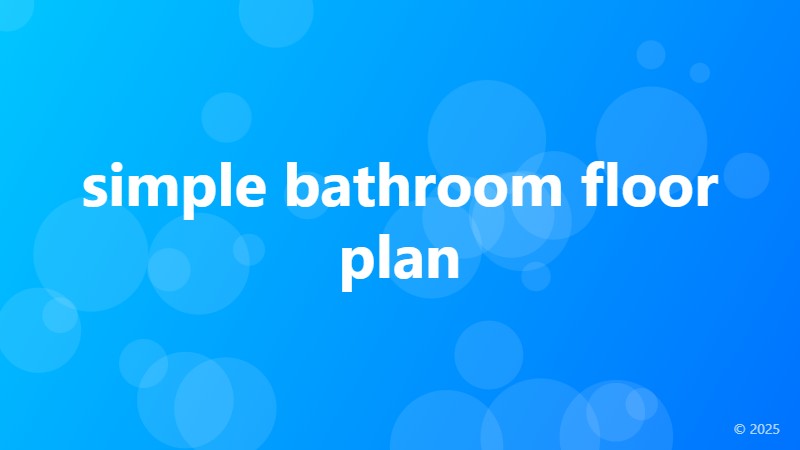simple bathroom floor plan

Designing a Simple Bathroom Floor Plan: A Guide to Functionality and Style
When it comes to designing a bathroom, one of the most crucial elements to consider is the floor plan. A well-planned bathroom floor plan can make all the difference in creating a functional and stylish space that meets your needs. In this article, we'll explore the key considerations and design principles for creating a simple yet effective bathroom floor plan.
Understanding the Importance of Bathroom Floor Plans
A bathroom floor plan is more than just a rough sketch of the room's layout. It's a detailed blueprint that takes into account the placement of fixtures, furniture, and other essential elements. A well-designed floor plan can help you:
- Maximize space and minimize clutter
- Optimize traffic flow and navigation
- Ensure proper ventilation and lighting
- Create a visually appealing and harmonious space
Key Elements to Include in Your Simple Bathroom Floor Plan
When designing a simple bathroom floor plan, there are several key elements to include:
1. Sink and Vanity: The sink and vanity area is often the focal point of the bathroom. Consider a pedestal sink or a wall-mounted vanity to create a sense of openness and visual appeal.
2. Toilet: The toilet should be placed in a private area, away from the sink and shower. Consider a wall-mounted toilet for added visual appeal and ease of cleaning.
3. Shower or Bathtub: The shower or bathtub should be placed in a way that creates a sense of flow and functionality. Consider a walk-in shower or a freestanding tub for added luxury.
4. Storage: Adequate storage is essential in a bathroom. Consider installing shelves, cabinets, or a recessed medicine cabinet to keep essentials within easy reach.
Tips for Creating a Simple and Functional Bathroom Floor Plan
Here are some additional tips to keep in mind when designing a simple bathroom floor plan:
1. Keep it Simple: Avoid clutter and excessive ornamentation. Instead, focus on clean lines, minimal decor, and a calming color palette.
2. Use a Grid System: Divide the bathroom into a grid system to help you visualize the space and plan the layout more effectively.
3. Consider the "Wet Zone": Designate a specific area for the shower, toilet, and sink to create a "wet zone" that's easy to clean and maintain.
4. Don't Forget About Lighting: Proper lighting is essential in a bathroom. Consider installing task lighting, ambient lighting, and natural lighting to create a warm and inviting atmosphere.
Conclusion
Designing a simple bathroom floor plan requires careful consideration of several key elements, including the sink and vanity, toilet, shower or bathtub, and storage. By keeping it simple, using a grid system, and considering the "wet zone," you can create a functional and stylish bathroom that meets your needs. Remember to prioritize proper lighting, ventilation, and traffic flow to ensure a bathroom that's both beautiful and functional.